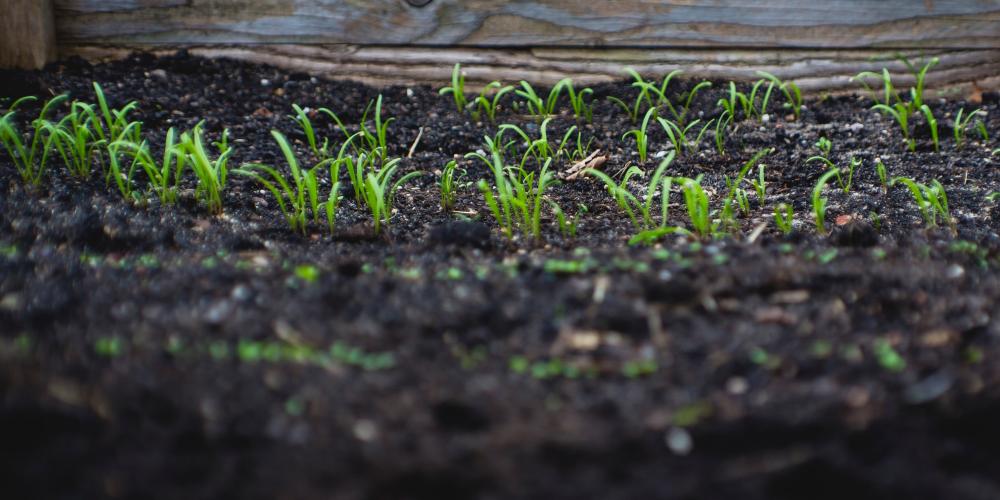Climate-Smart Food and Agriculture Systems
Millions of people rely on agriculture for their livelihoods, but this sector is highly vulnerable to climate change. Agricultural communities, government institutions, civil society and private sector actors, among others, are critical to catalyzing shifts towards climate-smart agriculture and food systems.
Agriculture and Climate Resilience Go Hand-in-Hand
Agriculture is the primary livelihood for about one billion around the world. Changes in weather patterns and extreme climatic events — droughts, floods and increasingly unpredictable rainfall — disrupt agriculture and livestock production, deeply impacting the food security and nutrition of households and communities.
People around the world — from scientists and policymakers to farmers and ranchers — are rising to these challenges by adopting evidence-based climate-smart agriculture approaches to achieve a resilient, low emission, equitable and food-secure future.
Feeding the World, Protecting the Planet
Climate-Smart Food and Agriculture Systems Approach
Farmers need access to and investment in appropriate climate-smart technologies, practices, and approaches that increase productivity, build farmers’ resilience to climate change, and decrease greenhouse gas emissions. A climate-smart food and agriculture systems approach:
- Strengthens farmers’ and pastoralists’ ability to produce, sell and distribute food, which is essential to community food security and nutrition.
- Improves access to quality information, inputs, training and markets. Support household resilience through opportunities to diversify outside of and between crop production, animal rearing and fisheries practices.
- Promotes best practices at farm and landscape levels, such as soil and water conservation, that build resilience to climate shocks and stresses while reducing agriculture’s contributions to climate change.
- Provides access to government and private sector services and programs that contribute to climate-smart agriculture. This includes climate information services, crop insurance and land tenure and land use policies that reduce risk and incentivize sustainable production.
- Ensures that local communities and critical populations, such as women, youth, disabled and indigenous peoples, are meaningfully engaged in and lead climate-smart agriculture efforts to achieve effective and equitable outcomes.
Climate-Smart Agriculture Practices
According to the World Bank, climate-smart agriculture is “an integrated approach to managing landscapes—cropland, livestock, forests and fisheries—that addresses the interlinked challenges of food security and accelerating climate change.” This approach increases productivity, enhances resilience and reduces emission with impacts not only on the farm, but across the landscape. Identifying the best climate-smart agriculture practices requires understanding the context. Climate-smart agriculture practices can protect farmland and enhance productive soil for generations to come, foster long-term resilience.

Research suggests that building a culture of soil conservation can motivate small farming communities to adopt best practices for protecting their land and waterways.
A study conducted in Malawi with the support of Feed the Future, the U.S. government’s global hunger and food security initiative, examined factors that motivate small-scale farmers to adopt climate-smart agriculture. Results indicated that small-scale farmers look to the behavior of their neighbors as an important influence on their own decision to adopt new practices. Farmers were more likely to adopt climate-smart techniques when they saw their neighbors implementing them first. In fact, neighbors influenced the small-scale farmers in the study even more than financial incentives.
Youth can also be effective in scaling new climate-smart agriculture practices. The Leveraging Economic Opportunities (LEO) Study consulted Feed the Future programs working with nearly 400 youth across all 19 Feed the Future countries, aiming to inform efforts to more strategically and deliberately engage youth in agricultural productivity and local market systems. LEO found that, compared to their older counterparts, youth are more willing and better prepared to adopt new agricultural practices and technologies, both at the farm level and throughout value chains. Both Guatemalan and Nepalese youth, for example, had a keen interest in programs that utilized innovative biological pest control techniques. Learn more about the LEO study and its findings.
Gender Equity in Agriculture
Climate change impacts women through food insecurity, water scarcity and increasing inequality. In many countries where USAID works, there exists a persistent gender digital divide, greatly impacting women’s ability to contribute to and make use of digitally-enabled climate information services. Work by CGIAR suggests that climate-smart agriculture interventions can build momentum toward an equitable future where women have agency in responding to climate change when they incorporate at least two of the following four actions:
- Ensure women participate in decision-making at all levels
- Reduce women’s work burden
- Provide women with access to and support their use of resources, such as agroclimatic information, technology, livelihood incomes and credit
- Support collective action
USAID’s Climate Strategy emphasizes the need for locally led initiatives that strengthen equity and inclusion — especially those partnerships that engage Indigenous people, further women’s empowerment or promote youth development.
Inclusive livestock management is helping mitigate climate change and bolster household resilience in Haiti.
More About Climate-Smart Food and Agriculture Systems
Further Concepts and Approaches for Enhancing Food System Resilience
22 Nov 2023 - John Ingram , William Bellotti , Mike Brklacich , Thom Achterbosch , Bálint Balázs , Martin Banse , Simon Fielke , Line Gordon , Saher Hasnain , Lieve Herman , Rebecca Kanter , William Kaye-Blake , Jerome Mounsey , Anne Pihlanto , Allyson Quinlan , Johan Six , Rike Stotten , Thomas Tomich , Attila Tóth , Carolina Yacamán , Monika Zurek
The 3Rs of food systems resilience are fundamental to building systems that are prepared to support food and nutrition security outcomes.
Resilience and Food Security in a Food Systems Context
22 Nov 2023 - Palgrave Studies in Agricultural Economics and Food Policy , Christophe Béné , Stephen Devereux
To support food and nutrition security, it is essential to look beyond agriculture and trade and embrace a holistic food systems perspective.
Food System Resilience Measurement: Principles, Framework and Caveats
22 Nov 2023 - Christophe Béné , Timothy R. Frankenberger , Suzanne Nelson , Mark Alexander Constas , Gregory Collins , Mark Langworthy , Karyn Fox
Applying a resilience lens, this framework is an essential tool for assessing the ability of a food system to maintain, protect and recover from shocks and disturbances.
Food System Resilience: Toward a Joint Understanding and Implications for Policy
21 Nov 2023 - Bart de Steenhuijsen Piters , Emma Termeer , Deborah Bakker , Hubert Fonteijn , Herman Brouwer , Wageningen University and Research
To support food security and equitable livelihoods in the face of shocks and stressors, policymakers need a common understanding of food systems resilience.





